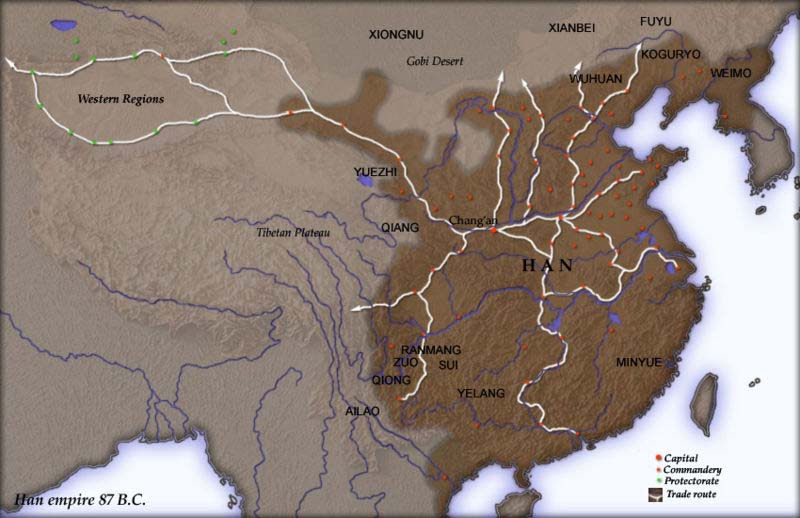China 100 BC Han Dynasty Ancient Rare Stickman Sculpture In Earthenware Pottery
Standing Stickman from the Han Dynasty.
Original ancient Chinese tomb attendants sculpture of a tall, thin standing man wearing a short tunic. Beautifully crafted in grey earthenware terracotta around the 100 BC, during the Han dynasty period between the 206 BC to the 220 AD. This sculpture is hollow-moulded extremely well-detailed and executed with very pleasing facial expression, the hair worn in a knot style typical to that time period. The face and body are decorated with natural color pigments, painted in pink, orange-red and white The shoulders are pierced all the way through the torso with two perforations to fit the wood arms, this parts has been lost due the nature of the material, as usual for this period.
Have a measurements of 470 mm by 127 mm by 139 mm (47 x 12.7 x 13.9 Cm) (18.5 x 5 x 5.5 inches). The size is excluding stand.
Note: The Stickman figures were only used by the royal family and where placed like armies to help and protect the owner in the afterlife. These figures were modeled after wooden examples. The arms, which likely were wood, and the clothing have disappeared over time.
Note: Originally these figures were dressed with clothes and with the elapse of time, their dresses became rotten, they were left dress less, and became naked. Originally they had wooden arms which were fitted on the sockets of the shoulders, and were moveable, now the wooden arms are reduced to ashes because of erosion, and they are missing. The whole surfaces of the figurines were painted with colours. These kinds of figures were only found around the capital, and were used by the royal family and forbidden to ordinary people.

The Han dynasty (206 BC-220 AD), was one of the longest of China's major dynasties. In term of power and prestige, the Han dynasty in the east, rivaled its almost contemporary Roman empire in the west. With only one interruption it lasted a span of over 400 years and was considered a golden age in Chinese history, especially in arts, politics and technology. All subsequent Chinese dynasties looked back to the Han period as an inspiring model of an united empire. Regarding the art of this time, it is still eminently funerary, although it reflects the very high artistic level that will be reached both in the capitals and in the provinces. These preserved objects provide us with information on the daily life and customs of the time, since the art becomes much more mundane than the bronzes of the Zhou and Shang periods.
 Provenance: A private collection in New York city collected in the 1964; T.K. Asian antiquities gallery, Williamsburg Virginia; a private collection in Palm Beach FL; then purchased by James & Nancy Markell, Virginia 1976; then by descent to Lauren Markland, Fort Lauderdale, FL.; acquired in Palm Beach, FL. in March 7, 2021
Provenance: A private collection in New York city collected in the 1964; T.K. Asian antiquities gallery, Williamsburg Virginia; a private collection in Palm Beach FL; then purchased by James & Nancy Markell, Virginia 1976; then by descent to Lauren Markland, Fort Lauderdale, FL.; acquired in Palm Beach, FL. in March 7, 2021
Condition: It is in very nice condition, with remains of the original colored pigments. Is presented beautifully in a custom made museum quality black steel display stand.
INVENTORY REF: P0000MNNM/.1111




















